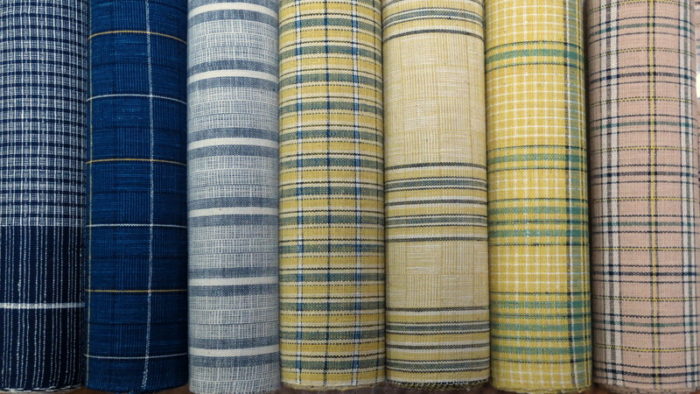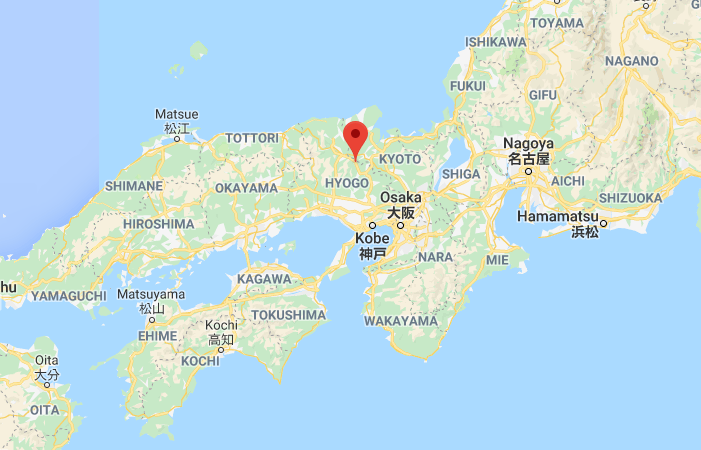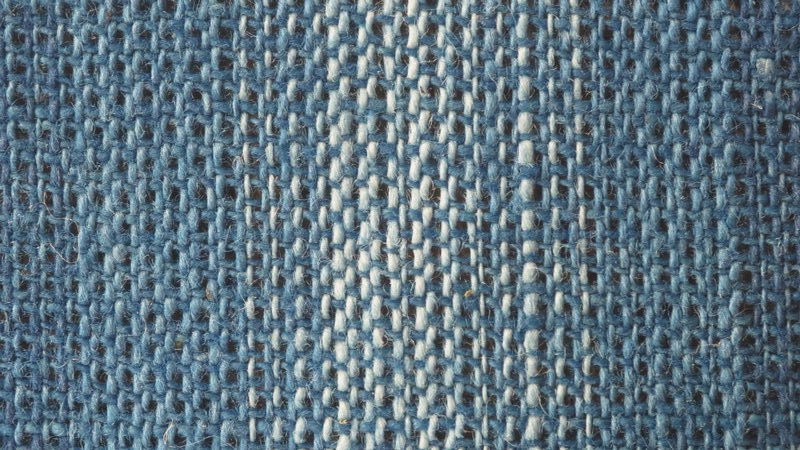The Hirota Tsumugi Blog
- 2019.05.20
- Tanba cloth — the restored folk craft textile

Tanba cloth (Tanba-fu) was used to be called “Sajimomen (佐治木綿)“, a plain woven folk textile of handspun cotton and silk, produced at Saji-village, Tanba. Sajimomen was popular in the late Edo period, and once died out until the beginning of 20th century. After it was extinct, it had completely fallen into oblivion.
However, Yanagi Soetsu, a leading personality of the Japan’s folk crafts movement (“mingei“), discovered its vintage cloth at a flea market by coincidence in 1930’s, and he renamed it as “Tanba-nuno“. The attempt of restoration has carried out since 1953 by a group of local craftspeople, along with the support by Yanagi.

Aogaki region, Tanba-city, is located at the border between Kyoto and Hyogo. A small remote mountain town.

The handspun cotton yarn. The soft and gentle yarn is uneven throughout. It creates unique texture and connotes handcraft warmth.

Thick handspun uneven yarns are woven into. Rough and open texture.

The unique characteristic of using hundspun silk for decorative accent. The white weft yarns.

Silk tsumami yarn, or Silk handpick yarn. A shining white silk is always used.
Another fascinating characteristic is the vegetation dyeing collected from local plants grew wild. All of dyeing are done by the plant dyes.
Below are a wide variety of Tanba-cloth we stock in different patterns and colors.

Natural indigo and Yashabusi (indigenous to Japan)

Natural indigo, Yashabusi, and Kobunagusa (a kind of grass)

Natural indigo and solid color

Natural indigo, Kobunagusa and Yashabushi

Natural indigo, Yashabushi and Kobunagusa

Same as just above

Natural indigo, Kuri (chestnut) and Kobunagusa
Tanba cloth is the two lot product and popular product sold out quickly. We could consult on the request of custom design.